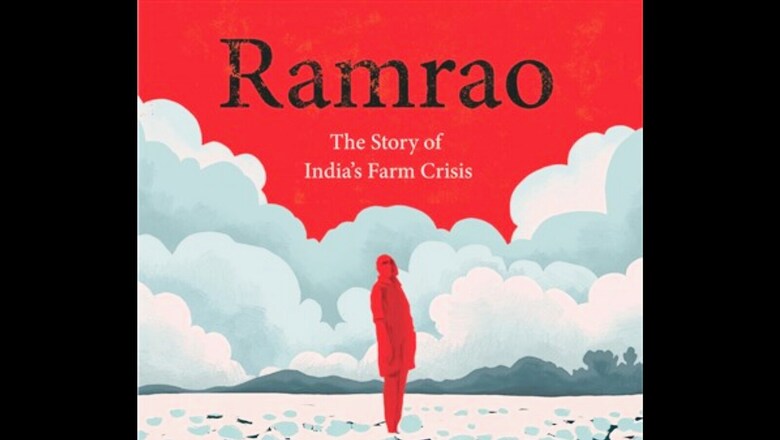
views
He rang the temple bell, applied a saffron mark to his forehead, folded his hands and bowed his head to offer one last prayer to Hanuman, the deity he would often turn to for succour, and fainted.
Darkness descended on him as if daylight had been switched off. His eyelids fluttered. He felt light-headed, as if in a trance. His mountainous worries melted away, then his brain stopped battling what felt like a faraway need to stay awake.
When he opened his eyes, he saw an old, motionless ceiling fan above him, its white blades grimy black with cobwebs and layers of dirt. It had not been cleaned in ages. Disoriented, his vision blurry, he took a while to regain consciousness. He was lying on a bed with a worn-out mattress and a dirty bed-sheet. A saline bottle hung from a rusty iron stand, transporting fluids and injections into his veins, drip by every drip. The ECG monitor mounted on a shelf behind the bed blipped, making haphazard lines in quick succession and a rhythmic tic-tic-tic sound. The digital screen displayed his blood pressure and pulse rate. He quietly studied the large, high-ceilinged room. He found himself relaxing. But at the same time his anxiety started coming back. He felt strained, his heart constricted.
Alongside him were eight or ten people in the room, a couple of them writhing in pain, fidgeting in their beds. Some others lay listless, almost dead. Two short, stout women in their fifties, clad in white, went in and out of the room, recording temperatures of the ailing men on the beds, administering medicine and yelling at the gathered crowds to wait outside.
For him, the surroundings were unnerving. It was not until he saw both his married daughters and a few familiar faces by his side that he felt reassured. It was a hospital and not the afterlife! His younger daughter told him he was in the Intensive Care Unit (ICU). It was maddeningly noisy and crowded because it was a public hospital. When he regained full consciousness, a thought ran through his mind—it may have been his first since he opened his eyes. Flashes of faces came to him, haunting him one by one. Those faces were of his lenders. Then he remembered: a dead cow, electrocuted by the barbed-wire fence on his field. He felt burdened by every breath he took.
He was still alive. He wanted to cry but could not; there were people around. For, Ramrao Panchleniwar, a cotton grower in his late forties, had meant to end his life by swallowing pesticide.
***
A dishevelled Ramrao is teary-eyed and, because of the heavy burdens he carries, he is exhausted, physically weak and constantly sighing. His stomach burns. He has no appetite.
Ramrao has been a farmer for as long as he remembers. And, like millions of Indian farmers, he is trapped in a vicious circle of debt and despair. We have been chatting for I don’t know how long now in his home in Hiwara village, a fifteen-minute drive from Pandharkawda, a town off National Highway 44—earlier called NH7—in Yavatmal district in eastern Maharashtra’s cotton belt of Vidarbha. Yavatmal has been in the news for an unabated spell of farmers suicides since 1996, the year I began as a cub reporter with an English daily in Nagpur. During this period, while reporting on rural distress, I have not met or known of many farmers who survived serious attempts to take their own lives.
Some months earlier, I met a young, educated Dalit farmer, a Neo-Buddhist, and his frail wife in a village in Washim district, north-west of Yavatmal and part of the cotton–soybean belt. They too had survived a suicide pact, an act they had committed in a fit of rage, a result of accumulated despondency—momentarily forgetting about their three children, all aged below seven. The couple, in their early thirties, was in anguish, hassled by loans, caught in a constant struggle to make their petty ends meet, unable to give their children a meaningful life.
Year after year they suffered losses from their arid, rain-fed, 3-acre farm. That year, when the children insisted on getting firecrackers and new clothes for Diwali, something the well-to-do in cities frequently splurge on, the young wife asked her husband if they could get the kids what they wanted. On hearing his blunt no, a brawl ensued between the two childhood sweethearts over their unending financial woes. The furious husband, distraught by his inability to fulfil his children’s small, legitimate wishes, swallowed a small bottle of Monocrotophos, an insecticide. In a fit of rage, his wife too quickly consumed another bottle kept in the house. They were lucky to survive the attempt—because they didn’t want to die.
Still struggling with trauma and guilt over what they had done, they told me that all they wanted was a decent life for their children—the good ‘convent school’ education they themselves never got, the clothes they themselves could not afford as kids, and three square meals.
Around the same time, a husband and wife in Deonala village, Yavatmal, took their lives because of mounting debts and declining incomes. The couple had taken loans from banks, micro-finance institutions, relatives. They hadn’t been able to meet their modest needs from their farm income—they had a 3-acre rain-fed plot on a hilly tract adjoining the village. They were Banjaras, the nomadic tribe known once for their primary occupation as cotton transporters. They had two teenaged sons, who migrated to a city to work as daily wagers in order to support the family, but the mountain of debt still proved to be too much.
For the scores of farmers attempting suicide, a few survive. Ramrao did.
This excerpt from Ramrao: The Story of India’s Farm Crisis by Jaideep Hardikar has been published with permission of HarperCollins Publishers India
Read all the Latest News, Breaking News and Assembly Elections Live Updates here.



















Comments
0 comment